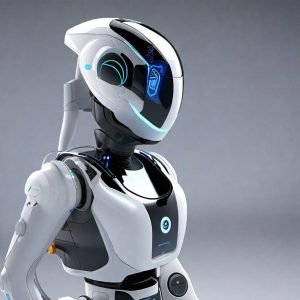
Robots have become a part of our modern life. They have been occupying a special niche in the medical field for almost 30 years. It all began with human space exploration, because it was then that the question arose as to what astronauts would do on orbital stations if they fell ill. At that time, NASA specialists created and launched a surgical robot that could be controlled by leading specialists from the Earth.
Let’s take a look at some of the most popular robots in the medical industry.
- Universal surgeon “Da Vinci“.
This device can perform various operations on human organs. It consists of two blocks: one is for the operator, the other acts as a surgeon.
The operation is performed as follows: the doctor, sitting at a convenient console, sees the operated area in 3D with multiple magnification, using special joysticks for control, and can clearly see the area that requires surgery. The functions of the hands are copied by special mechanical devices. Moreover, their diameter does not exceed 1 cm, which allows for a smaller incision. Today, this robot performs almost 80% of oncology surgeries in the United States, and patients recover faster afterwards.
- Italian robot “ARES“
This mechanism is designed to perform complex surgical operations. One of its features is the ability to perform manipulations without damaging the skin.
The procedure is as follows: the patient swallows each robot module sequentially, which independently assembles into a single mechanism inside the person, which performs the necessary actions.
- Robotic surgeon Mazor Renaissance
Specialists from Israel have developed this device, which is a computerized navigation system that can be used to perform precise and safe operations on the spinal cord and spine. With the help of this device, surgeons install implants in the spine during spinal fusion and perform a biopsy.
- Traumatologist SpineAssist
500 successful spinal surgeries have been performed using this technology. In order to draw up a detailed surgery plan and study the patient’s anatomical features, the robot takes a 3D image of the affected area. Next, he makes microscopic holes in the desired area of the victim’s bone tissue through which the necessary surgical procedures are performed.
- Dentist Yomi
Neocis Inc. Developed a robot that can perform dental implantation operations. He personally placed two implants in one of his patients at the end of last year. The device works as follows: it performs a computed tomography scan of the patient’s head, then plans the stages of the procedure and performs the manipulations precisely.
- Xiaoyi robotic diagnostic system
iFlytek Co., Ltd, a leading developer of artificial intelligence in China, has created a robot that can diagnose a patient. He passed the medical license test with flying colors, scoring 456 points. This device can perform tests and diagnose a patient, as well as localize outbreaks of epidemic diseases and predict risks.
- Robear nurse
The robotic nurse is equipped with special articulated joints and three types of tactile sensors that can recognize the human body by touch.
- Robot orderly KIRO-M5
Engineers from the Korea Institute of Robotics presented the KIRO-M5 robot to the public. The main purpose of the device is to work in hospitals as an automated assistant that delivers food to patients, sterilizes and ventilates rooms, and notifies medical staff if a patient needs to have the vessel replaced because it is equipped with odor sensors.
The robotic nurse is currently being tested in nursing homes, where its duties include waking patients up in the morning, notifying them when it’s time to eat, helping them to plan their daily routine, and notifying the staff of critical situations.
The device looks like this: it is 1 meter tall, weighs 80 kg, and has a pair of handles on the body. Autonomous navigation is performed using a set of laser and ultrasonic sensors, and it is also equipped with a camera.
Thus, the robotization of medical services is becoming increasingly widespread and is becoming an integral part of this area of human activity.

